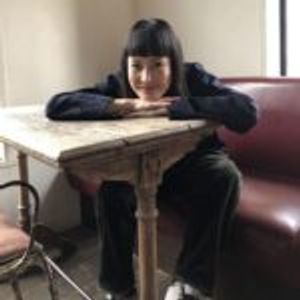Los-Angeles based photographer Brian Cross, better known by the moniker B+, has worked continuously since the ‘90s as a photographer of American hip hop artists. This past July, the artist came to Tokyo for the opening of Tried by Twelve: Photography by B+, a solo exhibition presented at the gallery space of the Trunk Hotel, Shibuya.
At the artist’s first exhibition in Japan in over four years, new concepts were pushed and challenges undertaken. Huge portraits were on display at the venue, including those of artists such as the Notorious B.I.G., Lauryn Hill, Kendrick Lamar, and Madlib. Why is it that these artists taken on such dimension at the hands of B+? We asked the photographer, who had come to Japan, about his career to date and his points of connection with Japanese culture.
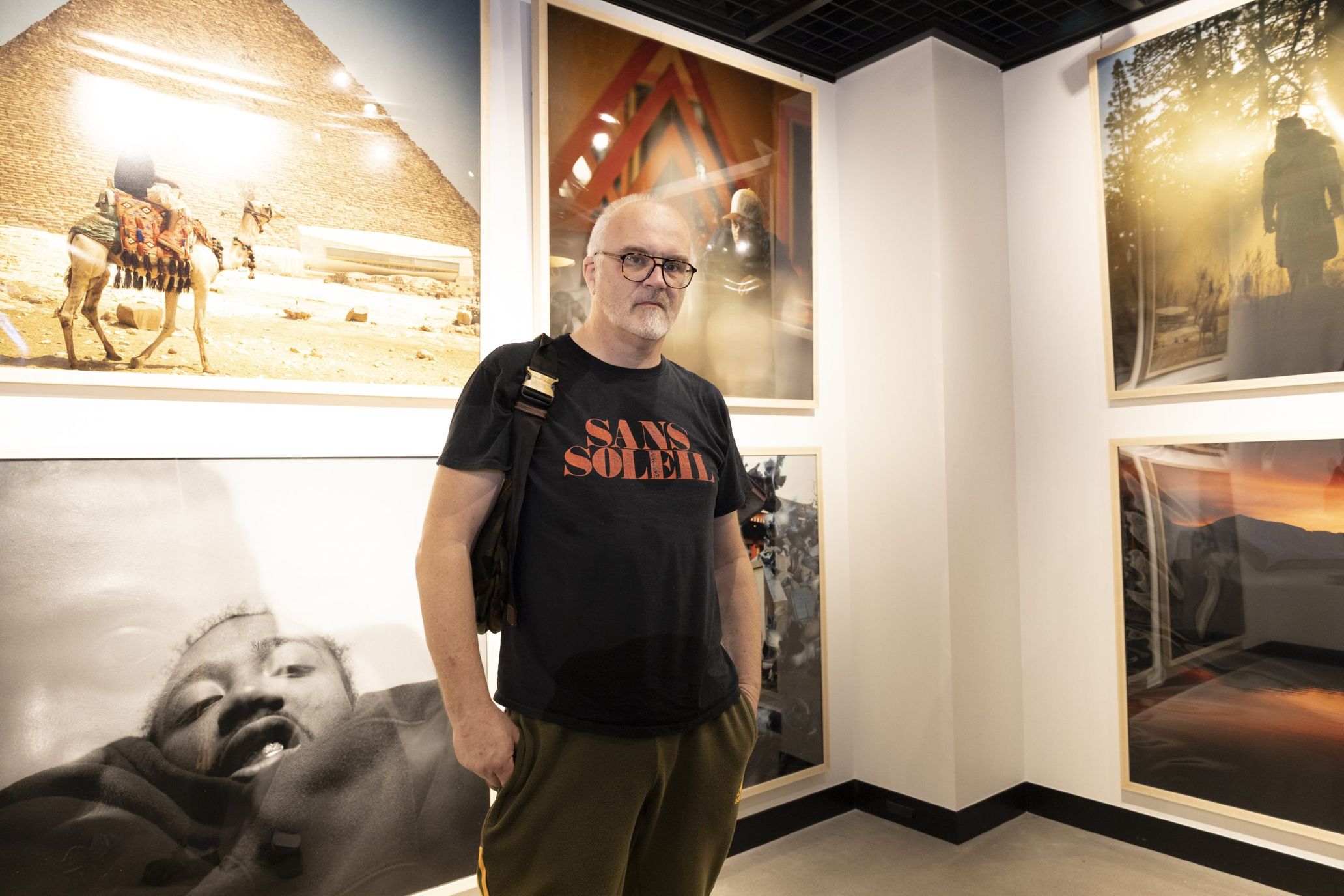
B+
Born Brian Cross, in Ireland, 1966. Moved to Los Angeles in 1990, where he studied photography at California Institute of the Arts (CalArts). Based on a project undertaken in his Graduate studies, he wrote and shot pictures for his first book It’s Not About a Salary: Rap, Race, and Resistance in Los Angeles in 1993. Since then, he has taken pictures of countless hip hop artists in America. He has also worked in film, directing several pictures for Mochilla, a production company he founded with Eric Coleman, including Keepintime: A Live Recording and Brasilintime: Batucada Com Discos, which featured turntablists, drummers, and Brazilian musicians. He also worked with Coleman on Banksy’s first film, the Oscar-nominated Exit Through the Gift Shop. He also has a deep connection with Japan, having shot music videos and cover photos for such acts as Nitro Microphone Underground and Kyary Pamyu Pamyu. He has published two photography books, Ghostnotes: Music of the Unplayed (2017) and Contact High: A Visual History of Hip hop (2018).
http://www.mochilla.com/bplus
Instagram:@bpleasel
Taking inspiration from the legendary underground hip hop track “Tried by Twelve”
——Can you tell us a bit about the content of the exhibition, Tried by Twelve? What made you decide to feature just twelve photographs?
B+: Well, the space, this time, was very small. While I usually just fill the space I’m given with pictures, this time I went for something intimate, almost too much so. I did a show here four years ago, for the book “16,” and noticed that the big pictures really looked good. So I thought wow, what if we do something with the big pictures that’s like what we’d normally do with the small pictures? So it’s gonna be a lot of big pictures in a very small space. So I’m trying something new, and showing some images that have never been shown before.
——So these are all pictures that haven’t been shown in exhibition before?
B+: The Biggie [Smalls] here, it’s in the book, but we’ve never shown it in a big size.
This time, the name of the exhibition, it has a lot of meaning. Earlier this year, a very good friend of mine died— he was a radio promoter, and promoted “Tried by Twelve,” the now-famous underground hip hop song. There’s twelve pictures, and “Tried by Twelve by East Flatbush Project,” it also refers to a jury— and I feel like the past few years have been a trial. But my friend, he was the one who promoted that song. And when I think of that song, it makes me happy. Anyway, the name has a lot of ideas in it. And then by some complete crazy fluke, the guys behind the company [supporting the exhibition], they named their company “12th.”
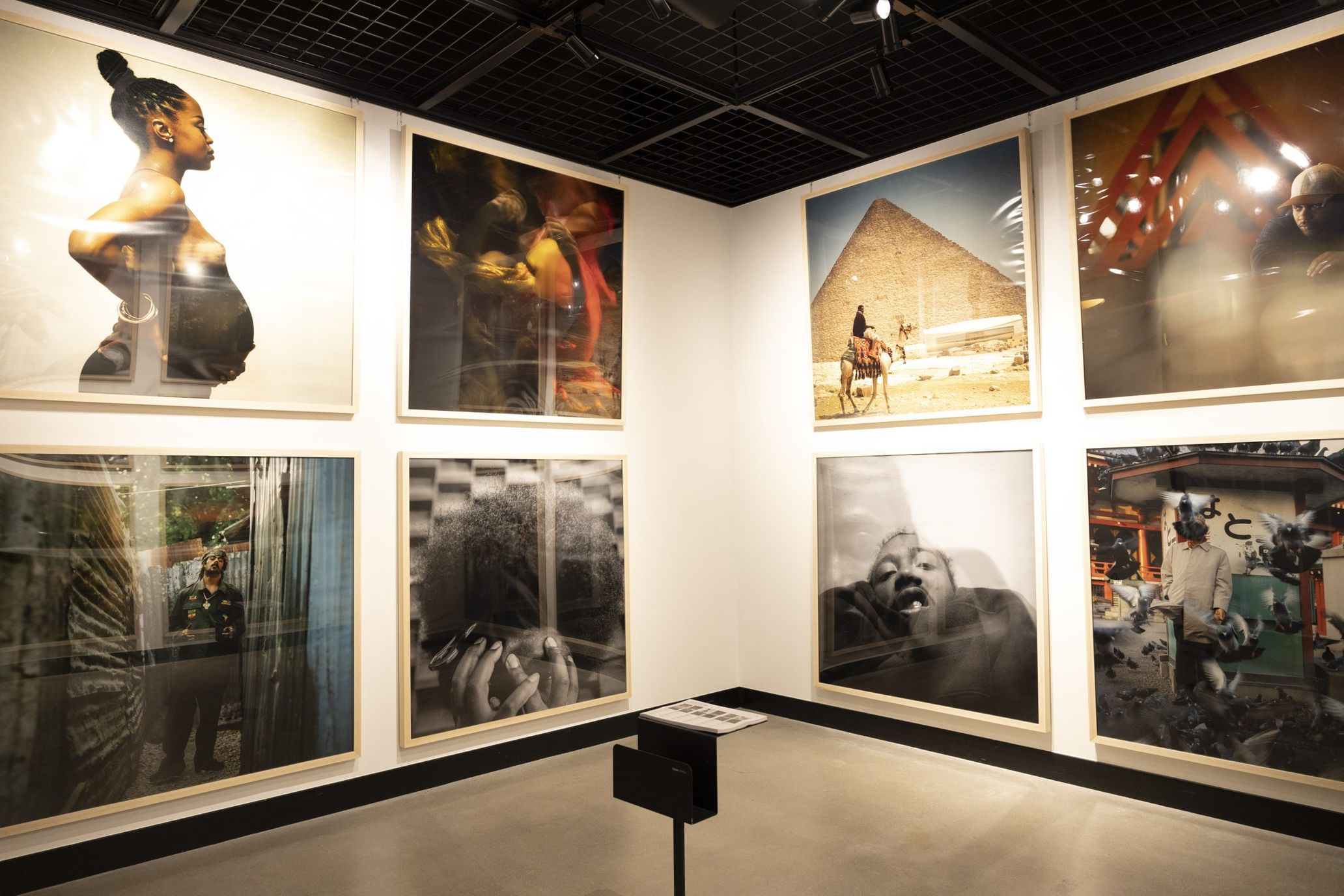

The exhibition view of Tried by Twelve: photography by B+
——I get the feeling that all these photos have stories behind them. Do you think you could tell us a bit about the behind-the-scenes of the shoot? How about this photo of Madlib, taken in Japan?
B+: Oh, that story’s very funny. Madlib made a record for Blue Note records. And at that period I was the only photographer taking photos of Madlib. And they asked me, can you make the cover for Blue Note? For me, that was a dream, I’d been very inspired by the record covers of Blue Note. At the same time, I was getting ready to go do an exhibition of photos in Japan for the first time. And the deadline, it was getting close, but still no Madlib. And the guys from Blue Note, they’re like “Where are the photos?” And I think “Fuck.”
So I call him, and I say “Look, we’ve gotta do these photos, bro. I leave for Japan next week.” And he’s like “Woah, Japan. Crazy. They got records there?” And I was like “Yeah they have records in Japan.” And so he said “OK, I’m coming.” And so two days to go, I call Take [Shimizu], from Manhattan Records, and I say “Take, Madlib wants to come.” And he’s like “OK, don’t worry, I’ll get the plane ticket.”
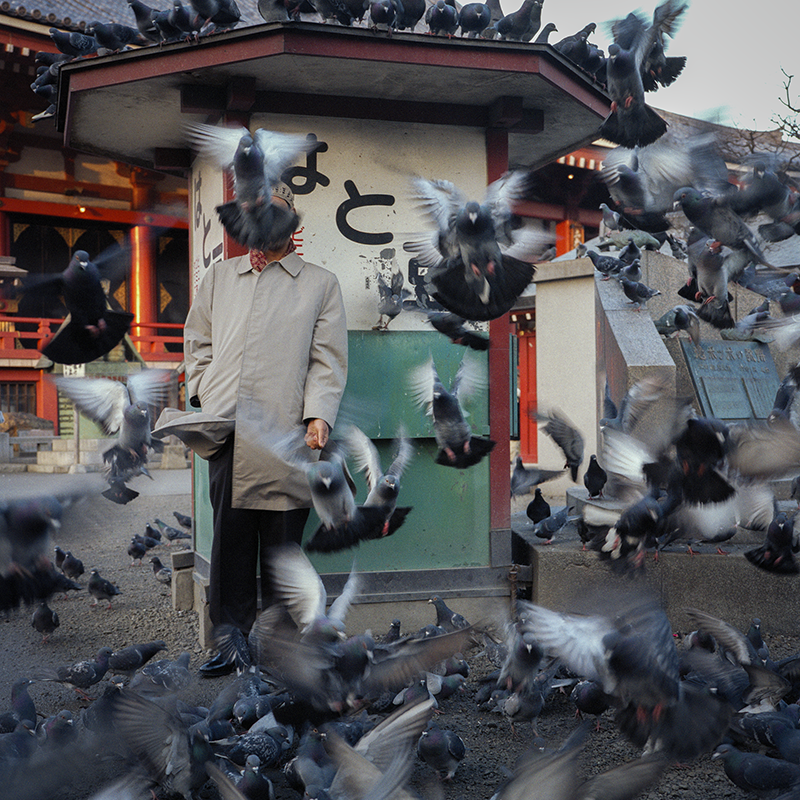
Photography B+
So we get the plane ticket for Madlib, he comes, it’s his first time in Japan…he spends three or four days with me and my friend as we set up the show, just sitting there with his headphones on, listening to music. Then after we finish with the show, we took him to the onsen, the mountains, all the record stores…and then one day we took him to the temple to take the photos for Blue Note. And there were so many pigeons there…you can buy crumbs to feed them, so we bought some crumbs, he threw them around and we took the picture. But the one they actually used for the cover is of him taking the train in Tokyo.
——How about the B.I.G. here? I feel like I’ve seen this photo before.
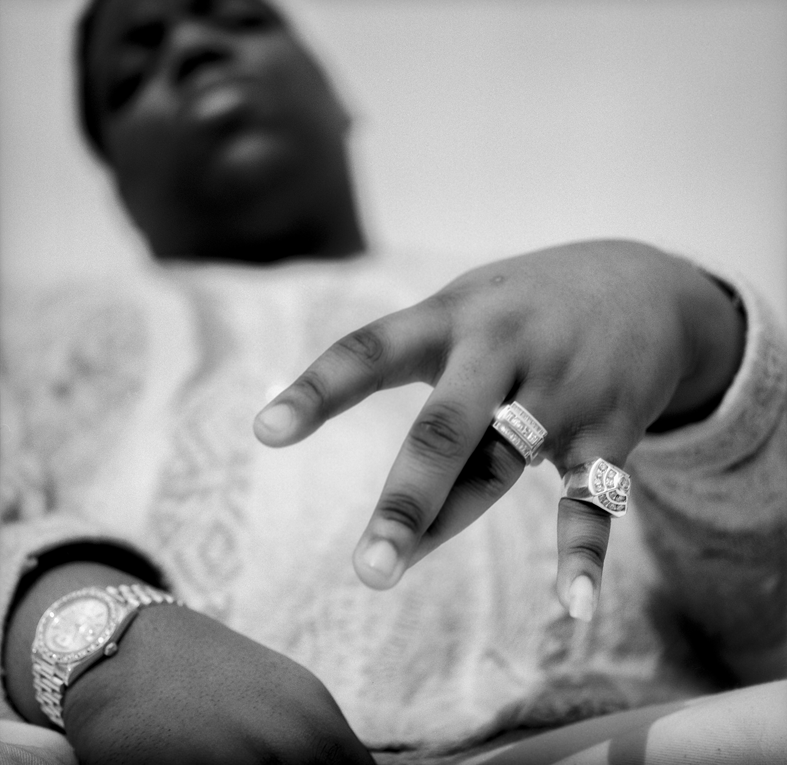
Photography B+
B+: The Biggie’s actually a very simple story. FINE magazine, I used to work for them a lot. That was when Biggie came to L.A. for the first time, back when only his single was out, “JUICY,” I think. So we went to meet up, and he was on the roof. Very sweet guy, very soft hands. And we talked for about fifteen minutes, then took some photos. Then one year later, he’s dead.
——I’m also curious about these photos of Erykah Badu and Lauryn Hill.
B+: Those photos, I took them for Lauryn Hill. I had photographed her for Rap Pages a bunch of times, and I’d heard she was pregnant. My friend was her publicist. And I called him, and I said “Lauryn’s gonna be changed forever now. As a gift, I would love to take some photos of her, pregnant.” So we flew to New Jersey, hung out, and made some photos. And the timing was crazy, because she was very pregnant, I think she had the baby like three days later. That’s when she was working on the album, The Miseducation [of Lauryn Hill].
She’s one of the people I really make an effort to see to ask permission to use the photos of. The last time was in LA, with Erykah Badu, at a tribute show to J. Dilla, hosted by The Roots. I was waiting backstage for her, really just hoping, like, wow, I hope she remembers me, man.
From when I’d begun working on my book Ghostnotes, I knew I wanted to make photographs of Erykah. And Erykah had wanted to make photographs with me, but we’d never had the chance to do it. So I said look, I’ll fly to Dallas, and get a hotel, and I’ll come to your house and make photos if you let me. And she just said “Yeah! Come!”
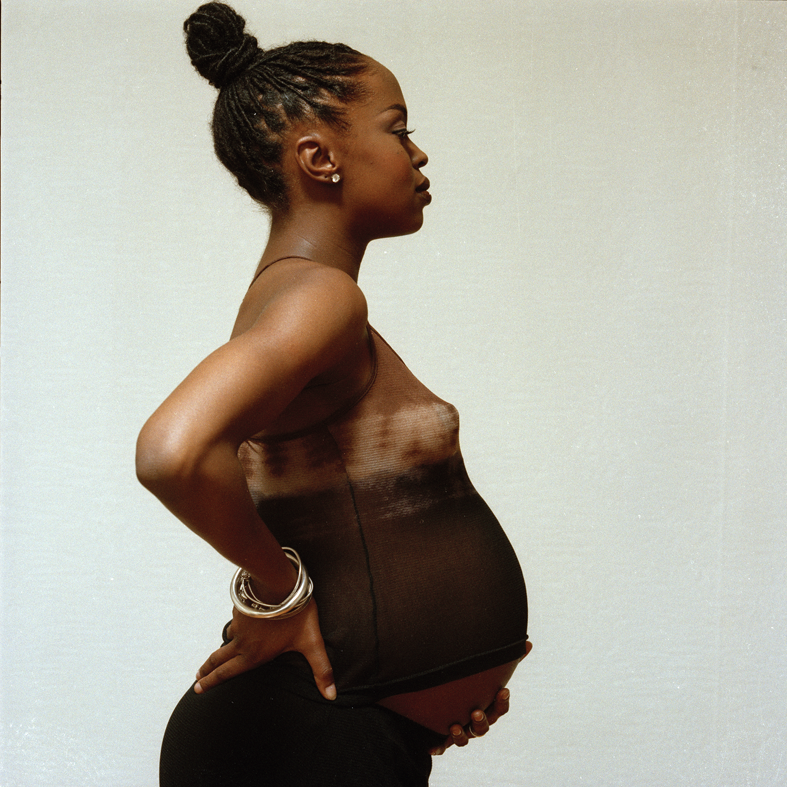
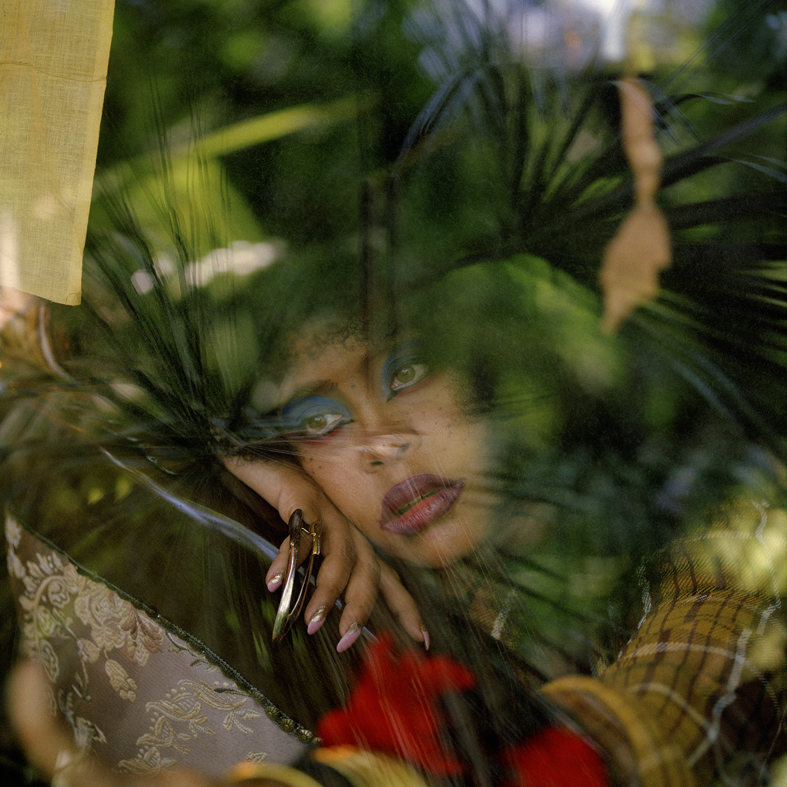
Photography B+
——How about this one of Ol’ Dirty Bastard from 1995? Were most of the photos you took from this time in black and white?
B+: I did both at the time, but this particular idea was black and white. We were imitating the same photoshoot from the Janet Jackson cover [1993’s Janet].
——Kendrick Lamar is one of the newer artists in your pictures. He lives in L.A., so he must not be far from you, right?
B+: That was before To Pimp a Butterfly. I shot him for Complex. We spent the whole day on it…very nice guy, very quiet guy. Very sweet. I think we knew how important the album would be. For that shot, we just turned things sideways, and I thought “Oh wow, that’s cool.” A lot of shoots like this are like, “Sit here!” “Look here!” But this was more casual.
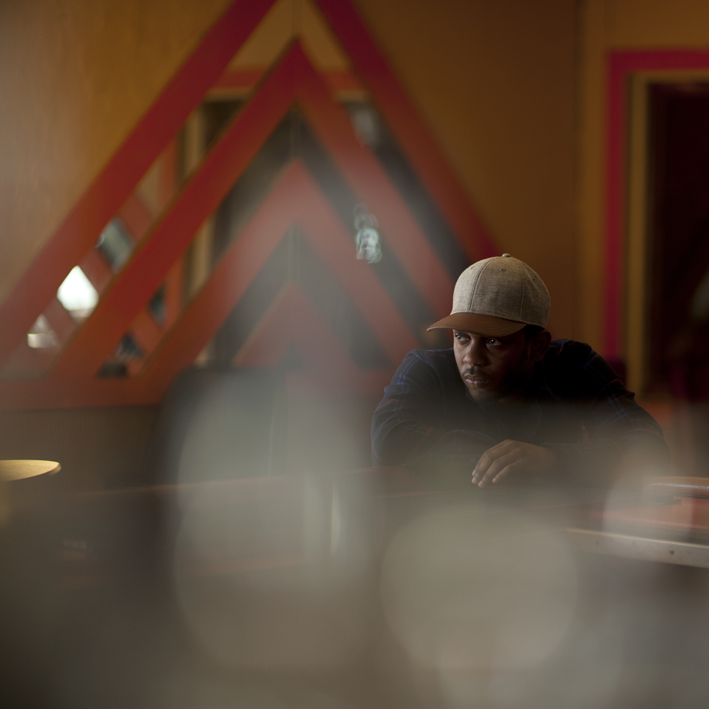
Photography B+
Learning from hip hop culture and expressing its ideas in the pictures
——In terms of your career, what made you choose hip hop? Did you listen to it back when you were in Ireland?
B+: In Ireland, I would say from 1984 to 1986, I only listened to hip hop. In the mid-80s you had Run-DMC, Mantronix, Schoolly D, the first Public Enemy record, the first B.D.P. record.
But when I finished my undergraduate degree and came to L.A., I realized that a lot of people didn’t like hip hop— it wasn’t considered music, it wasn’t considered culture. And from there I realized this was the new punk rock. I mean, maybe it’s not really punk rock, but at the time, I was responding to the fact that it was dissident, oppositional culture. So one of my professors said to me, “Why don’t you photograph it?” I didn’t think 30 years later I’d still be doing this.
——When you shoot pictures of hip hop artists, would you say you’re focusing on an idea of hip hop culture?
B+: Well yeah, I try to cultivate a photography that’s driven by hip hop ideas. I would really say my ideas are informed by an Afrocentric perspective of the world. I’m very inspired by non-European ideas about culture, photography, representation.
The first thing you have to understand is that you’re dealing with a 400-year history. And on the one side, you have slavery, and a huge genocide of Africans coming in to the Americas. And on the flip side, you have something that applies to all of us that aren’t European— Ireland, you know, wasn’t considered a part of Europe until 1973. It’s like with orientalism, that there could be an idea that there’s Europe and then there’s everyone else, that’s fucking crazy. To think that there’s only one way to understand the world, or that there’s only one centered version of the world, that’s a big, big mistake. So to break down this Eurocentric vision of the world, that’s been very important.
So then, how do you bring this into the day-to-day? You have to become as aware as you possibly can of the ways that people are represented, understood, and othered, and then you have to try to undo those things. Un-think those things. A lot of people deal with it in different ways, but some people say it’s about the “blur;” defying Western ideas of perspective, clarity, measure. Sometimes it’s about mimicry, or allegory, or satire…you know, like ODB’s satire. You have to keep in mind that it’s possible to develop an anti-racist practice. You asked a complicated question.
——In Japan, we love hip hop too. But I get the feeling that if we’re going to deal with it seriously, we ought to go deeper to learn about its culture and history.
B+: I think it’s a matter of respect. You wouldn’t expect someone to come from another place and start writing about, say, sumo, or woodblock prints, or calligraphy if they just came yesterday and don’t know shit. Cause it would feel like an insult, right? These are traditions with thousands of years. I think a lot of times, for people of the African diaspora, this is the experience. You’ll get people that say “Oh my gooood, you guys are rapping!” but it’s like, people have been rapping for a long time. It’s not that hip hop is so big, it’s that it’s so deep. It goes way way back, before the tragedy of European enslavement, this is technology that was a part of North African, Arab cultures. Even in parts of Europe, you had certain kinds of battling with rhymes and verses.
It goes back to the 1500s, you could see it in Brazil since the 1500s. Somebody might say it all began in 1972, but no, it’s just that in 1972 they put a name on it, they put these ideas together and called it something. And I say 500 years but who knows, maybe it was even 500 years before that. Which is not to say that hip hop’s not modern, or not truly a North American art form, which in many respects it is, like jazz. But we must afford these things the same kind of respect that we afford European classical music. It would be a joke to send somebody who just found out about classical music to review Beethoven or Mozart. But when it comes to rap, somehow it’s okay for somebody like that to write a review of Kendrick Lamar. Like, shut up. Listen, try to understand. Bring some respect.
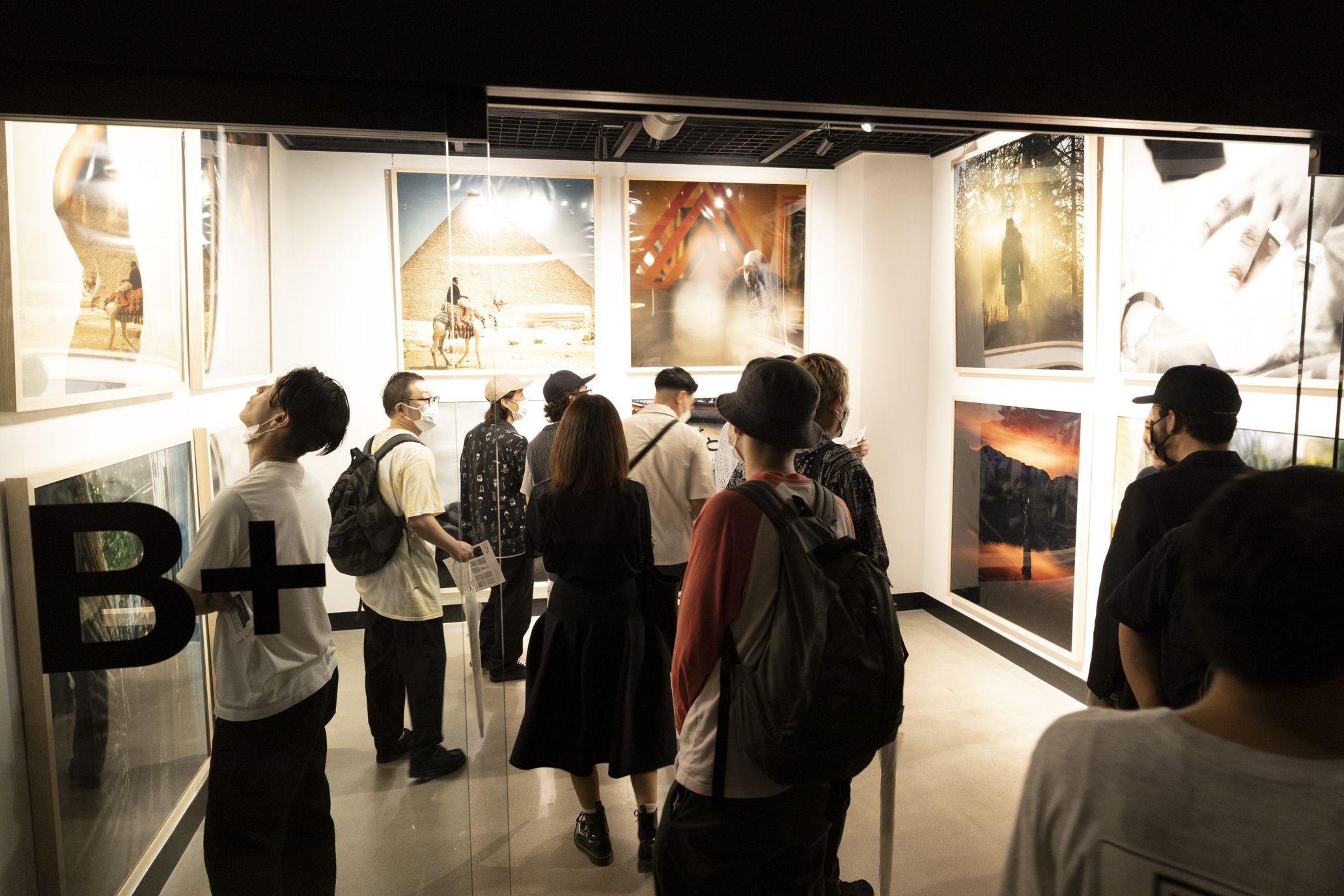
——I feel like with classical music, songs don’t usually have a beat in the way that hip hop songs do.
B+: Nah, they do, I think they do. I mean in hip hop it’s not that there are no melodies or harmonies, there are, but rhythm is prioritized. And you turn up the drums. The music reaches your body in a different way. There’s this idea that there’s “music for the body” and “music for the mind,” and that when we listen to Beethoven, it’s for the mind. But I’m like no, no, no, stop. All music is for the body and the mind. It’s about emphasis. Like, you have techno music, with its straight beat, I don’t want to hear it in my house. But there’s certain environments where that’s the only music I’d want to hear, if I’m at a festival, or a nightclub. But if it’s not something that engages both body and mind for me, I’m not gonna go looking for it.
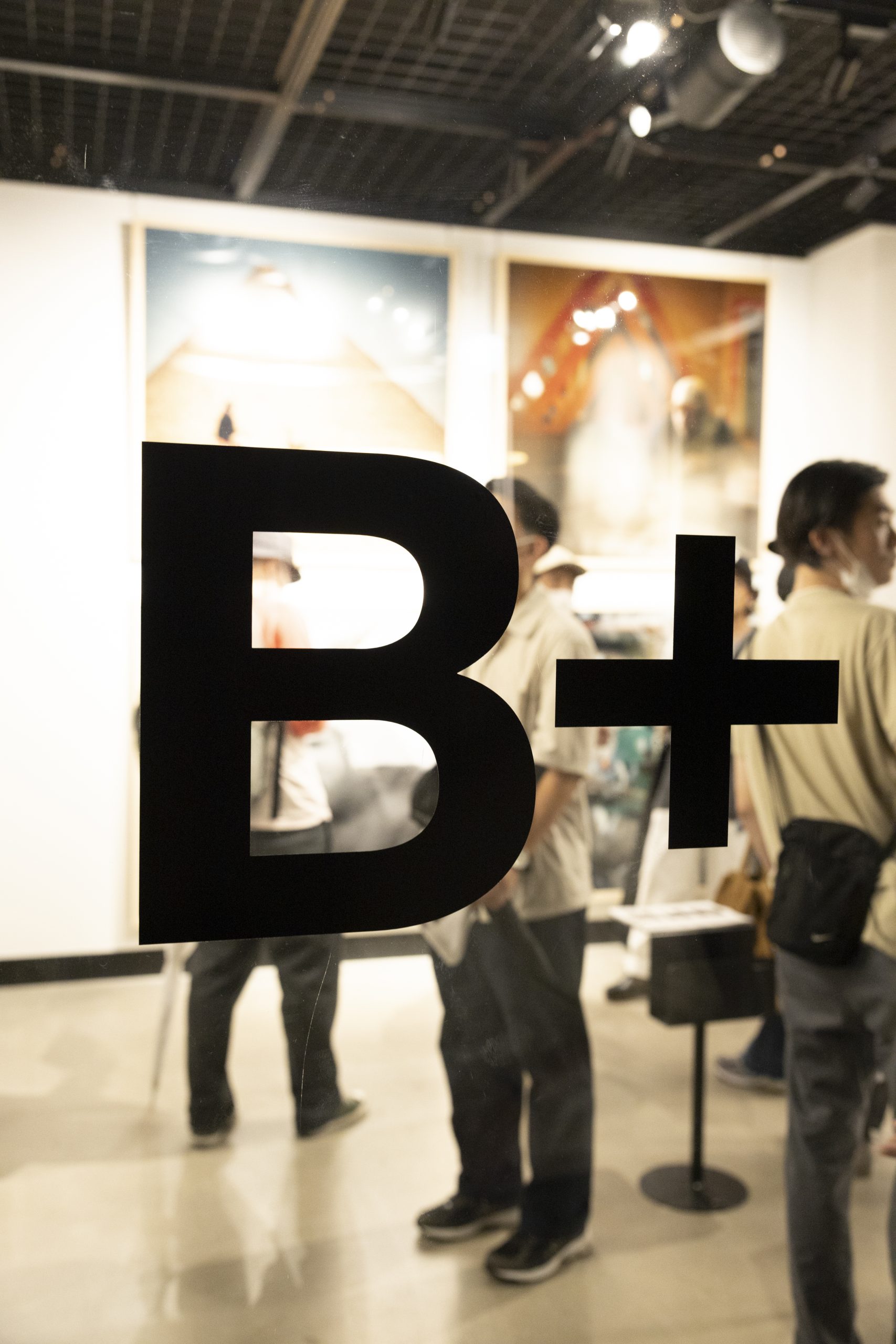
Araki, Kazuo Hara, Nagisa Oshima: the influence of Japanese photographers and directors
——When was the first time you came to Japan?
B+: I first came to Japan to shoot for The Source magazine in 1998. The second time was to make a video and album cover for Nitro Microphone. Then I came back again to do an exhibition, and for the launch of Keepintime. I think it has to be said that Japan’s played a very important role in the dissemination of hip hop culture, maybe in a way that’s not very obvious.
——Are any there Japanese photographers that you like?
B+: In the 90s, a friend showed me the work of Araki. It’s complicated, but he has this idea of the Eye novel. which is like the 19th century novel meeting photos. And me, I saw that, and I was like “Fuck. You can do that?” I mean, I knew about sequencing, I’m very interested in sequencing. But I was very impressed, the first time I came to Japan, by the idea that you could walk to a regular bookstore and buy an Araki book for like ten bucks. I still love to go to Jimbocho to look at books. I wish I could read kanji, cause then I could understand more. And of course when we come we also look for records, cause you have all the good records here. But books have been very important to me.
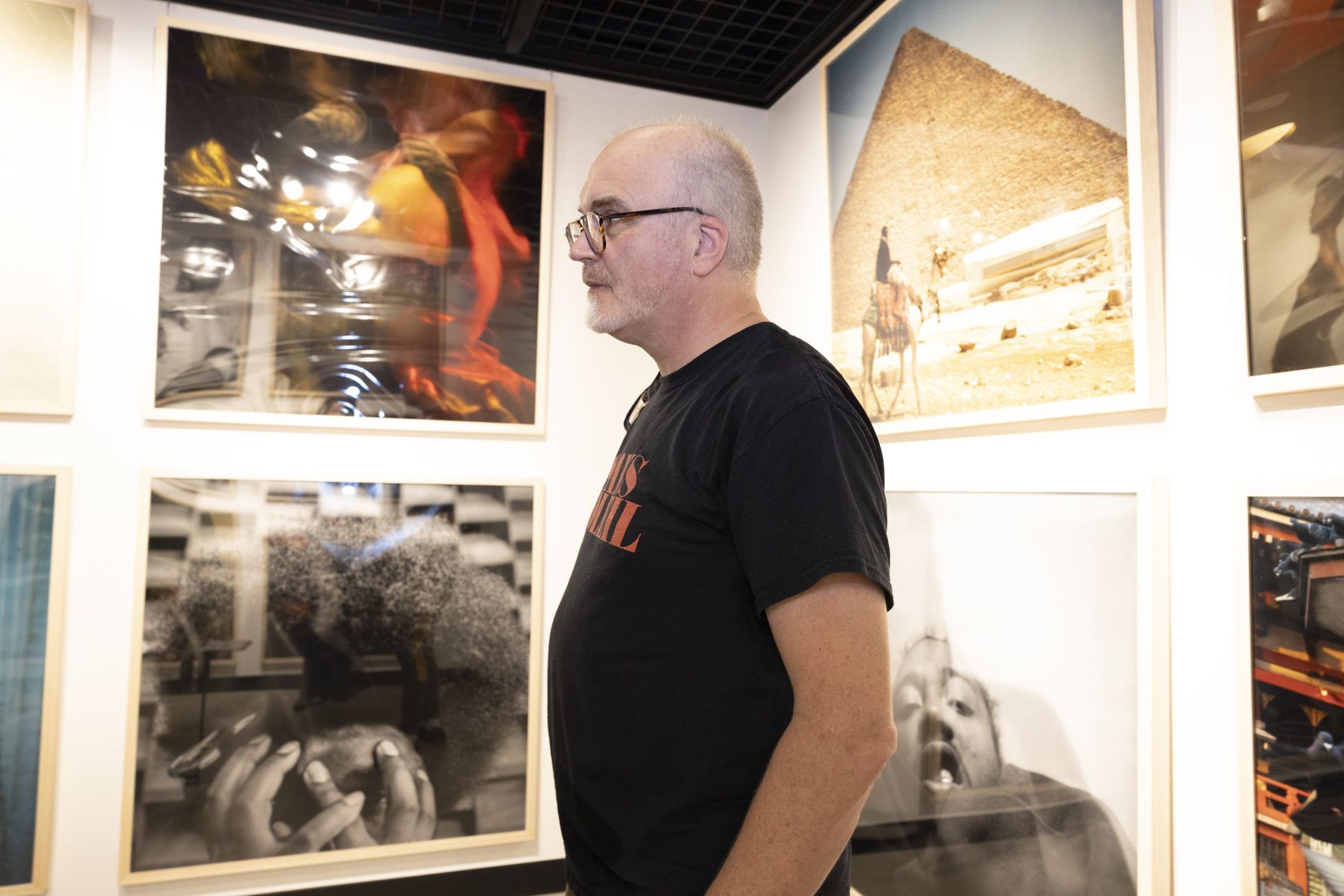
——I think today people are starting to see the value of physical things like records and paper books.
B+: Now it’s kind of a hipster thing, people make 500 books that each sell for 60 bucks. It’s cool, but I like the old-school idea better. Regular bookstores, where regular people can buy regular books. Regular people should be able to discover, to have that experience.
But I’m also impressed by Japanese cinema. Do you know Kazuo Hara? His documentaries, like The Emperor’s Naked Army Marches On (1987), really impressed me. My favorite film of his is Extreme Private Eros (1974). And also Sayonara CP (1972), that one is fucking crazy. That guy is the truth. Those first three movies, they’re crazy.
Just in the last ten years I’ve spent a lot of time watching Japanese cinema. Especially from the 60s. When I was 12, my father bought a VHS player and let me pick out films to rent. I got Oshima’s In the Realm of the Senses. Wild movie. But it’s not just Japan, I love films from the 60s. I’m just a baby when it comes to Japanese film.
——Lastly, I wanted to ask, have you been filming anything recently?
B+: Lately I’ve been working on this exhibition, but I’m also now working on three movies. One’s about the Supremes, the singing group from Detroit. And I finished a short film in Ireland last year about Denise Chaila, this young emcee who’s very important for our culture. And the last one’s a documentary about Jamaican music. Working on it has really helped me understand something about storytelling and music. It’s gonna be good.
Photography Atsuko Tanaka
Translation Toby Reynolds

